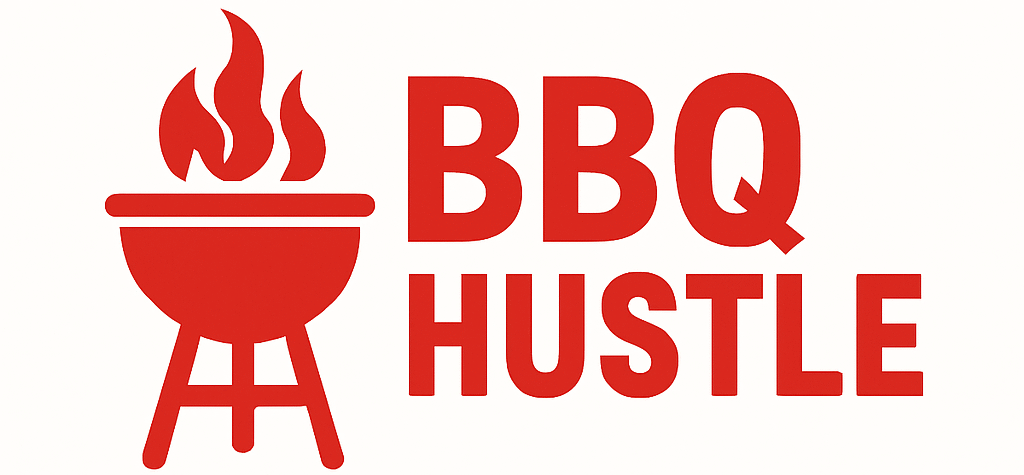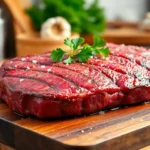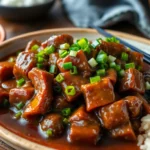When the craving for something deeply comforting hits, nothing beats a steaming bowl of Korean beef soup. We’ve perfected this soul-warming recipe that brings together tender beef, aromatic vegetables, and the perfect blend of Korean seasonings that’ll have your kitchen smelling like your favorite Seoul restaurant.
This isn’t just another soup recipe – it’s your gateway to mastering authentic Korean flavors at home. We’re talking about rich, savory broth that’s been simmered to perfection, paired with melt-in-your-mouth beef that practically falls apart with each spoonful. The best part? You don’t need a dozen specialty ingredients or years of cooking experience to nail this dish.
Whether you’re looking to expand your culinary horizons or simply want a hearty meal that feeds both body and soul, this Korean beef soup delivers every single time. Let’s jump into creating this restaurant-quality masterpiece in your own kitchen.
Ingredients
This Korean beef soup recipe requires simple yet authentic ingredients that create complex flavors. We’ve organized everything into three categories to make shopping and preparation effortless.
For the Beef and Broth
- 2 pounds beef short ribs, cut into 2-inch pieces
- 1 pound beef brisket, cut into large chunks
- 1 large onion, quartered
- 6 garlic cloves, smashed
- 2-inch piece fresh ginger, sliced
- 2 bay leaves
- 1 tablespoon whole black peppercorns
- 12 cups cold water
- 2 teaspoons salt
For the Soup Base
- 3 tablespoons Korean soy sauce (guk ganjang)
- 2 tablespoons fish sauce
- 1 tablespoon sesame oil
- 1 teaspoon ground white pepper
- 2 medium carrots, sliced diagonally
- 1 large daikon radish, cut into chunks
- 4 shiitake mushrooms, sliced
- 2 green onions, chopped
- 1 tablespoon minced garlic
- 1 teaspoon grated fresh ginger
For Garnish and Serving
- 2 green onions, thinly sliced
- 1 tablespoon toasted sesame seeds
- Steamed white rice
- Kimchi for serving
- Korean red pepper flakes (gochugaru), optional
Equipment Needed

We need just a few essential pieces of equipment to create authentic Korean beef soup at home. The most important tool is a large heavy-bottom soup pot or Korean earthenware pot called ttukbaegi. This vessel allows us to simmer the broth for several hours while maintaining consistent heat distribution throughout the cooking process.
A sharp knife becomes crucial for cutting beef brisket or short ribs into proper chunks. We also need a sturdy cutting board that can handle the weight and texture of raw beef without slipping during preparation.
Our strainer or slotted spoon serves multiple purposes during the cooking process. We use this tool to remove foam and impurities that rise to the surface while the broth simmers. This step ensures our final soup has a clear and clean appearance.
Standard measuring cups and spoons help us portion seasonings accurately. Korean beef soup relies on balanced flavors, so precise measurements of soy sauce, fish sauce, and other seasonings make a important difference in the final taste.
We recommend having serving bowls ready for presentation. Traditional Korean soup bowls work best, but any medium-sized bowls will serve the purpose. These bowls should be heat-resistant since we serve the soup piping hot.
Small prep bowls assist with organizing ingredients before cooking begins. We can separate chopped vegetables, measured seasonings, and prepared garnishes in these containers. This organization streamlines the cooking process and prevents any missed ingredients.
A ladle makes serving much easier and safer when dealing with hot broth. We use this tool to portion the soup into individual bowls while ensuring each serving contains an appropriate amount of beef and vegetables.
Instructions

Let’s create this authentic Korean beef soup by following these carefully structured steps. We’ll build layers of flavor starting with properly prepared beef and ending with a perfectly seasoned broth.
Prep the Beef
We begin by soaking our beef brisket in cold water for 20 minutes to draw out any blood and impurities. Change the water several times during this process to ensure cleanliness. Remove any excess fat from the meat and cut the brisket into manageable pieces that will be easy to handle during cooking and later shredding.
Wash and peel our Korean radish or daikon thoroughly before cutting it into uniform chunks. This preparation step ensures even cooking and optimal flavor absorption throughout the soup.
Make the Broth
Add 10 cups of cold water to our large pot along with the prepared beef brisket pieces. Include one peeled onion, several green onions, and whole black peppercorns for aromatic depth. Bring this mixture to a vigorous boil over high heat while carefully skimming off any foam or scum that rises to the surface.
Once we achieve a rolling boil, cover the pot and reduce heat to medium low. Allow the broth to simmer steadily for 45 minutes to 1 hour until the beef becomes fork tender and the broth develops rich flavor. Remove the beef pieces and strain the broth completely, discarding the vegetables and spices while preserving our clear, flavorful liquid gold.
Prepare the Soup Base
Heat a clean pot over medium low heat and add cooking oil along with a splash of sesame oil. Sauté sliced green onions until they become soft and fragrant. For spicy variations like Yukgaejang, stir in Korean chili powder briefly to release its aroma without allowing it to burn.
Pour our strained broth back into the pot and add thinly sliced beef strips. Include shiitake mushrooms if desired for additional umami depth and texture contrast.
Assemble the Soup
Bring our soup base to a boil and incorporate additional vegetables such as fernbrake, bean sprouts, or Korean radish chunks depending on our chosen recipe style. Season the soup with salt and enhance with garlic or soy sauce according to taste preferences.
Balance the ingredients to create harmony between the protein, vegetables, and aromatic elements that define authentic Korean beef soup.
Final Cooking and Seasoning
Simmer our assembled soup on medium to medium low heat for an additional 20 to 30 minutes. This allows all flavors to meld together while ensuring vegetables cook through but maintain their tender texture. Taste and adjust seasoning with salt or soy sauce as needed to achieve the perfect flavor balance.
Garnish with fresh green onions just before serving to add color and a final layer of freshness. Serve immediately with steamed rice and traditional Korean side dishes like kimchi for an authentic dining experience.
Cooking Tips and Techniques

Master these essential techniques to create restaurant-quality Korean beef soup at home. We’ve gathered time-tested methods that guarantee rich flavor and tender meat every time.
Achieving the Perfect Broth
We recommend using cuts of beef with marbling like brisket, flank, or shank to ensure your broth develops rich flavor while keeping the meat tender. Lean cuts become tough and produce less flavorful broths that lack the depth Korean soup deserves.
Timing your salt addition makes a crucial difference in flavor development. We never add salt until the beef cooks completely because early salting prevents the meat’s natural flavors from fully infusing into the broth. This technique allows maximum flavor extraction from your beef.
Hot water should always be your choice when adding liquid during the cooking process. Cold water dilutes the broth and reduces its clarity, which diminishes the overall taste we’re working to build. Maintaining temperature consistency preserves the soup’s integrity.
Water quantity requires careful attention since too much liquid creates a watery soup that lacks concentration. We prefer starting with more meat or less water because you can always dilute a strong broth later, but you cannot easily strengthen a weak one.
Beef Cooking Methods
Slow simmering transforms tough cuts into tender, flavorful pieces that define authentic Korean soups. We simmer beef brisket or short ribs for hours to extract deep flavors and achieve the soft texture found in traditional soups like Gomtang and Galbitang.
Quick cooking methods work well for weeknight versions when time is limited. We marinate thin beef strips and sauté them before adding water for brief simmering, creating satisfying Korean beef soup with rice in less time.
Skimming foam and impurities during the early simmering stages keeps your broth clear and clean tasting. We remove these elements as they surface to maintain the pristine appearance and pure flavor that characterizes quality Korean beef soup.
Variations and Substitutions

Korean beef soup offers incredible flexibility when it comes to adapting the recipe to your preferences and available ingredients. We can easily modify both the protein and vegetables to create different flavor profiles while maintaining the authentic essence of this beloved dish.
Different Cut Options
Beef brisket remains our top choice for creating a tender, flavorful soup base. This cut breaks down beautifully during long simmering and provides the perfect balance of meat and fat for a rich broth. We recommend using this cut when you want that classic Korean beef soup experience.
Beef short ribs transform our soup into Galbitang, offering a meatier and more robust flavor profile. These ribs contain more marbling than brisket, which creates an incredibly satisfying and hearty soup. Short ribs work particularly well when we want to impress guests with a restaurant-quality presentation.
Beef tendon adds exceptional body and gelatin to our broth, creating that silky mouthfeel found in traditional Gomtang. While tendon requires longer cooking times, it rewards us with an incredibly rich and nourishing soup that showcases authentic Korean cooking techniques.
We can also combine different cuts for complexity. Mixing brisket with short ribs gives us both tenderness and richness, while adding beef bones creates an even deeper flavor foundation similar to Seolleongtang.
Vegetable Additions
Korean radish (mu) or daikon radish serves as our primary vegetable addition, providing a subtle sweetness that perfectly complements the beef’s savory notes. This vegetable also helps clarify the broth naturally while adding essential nutrients and texture.
Onions and green onions form the aromatic foundation of our soup. Regular onions contribute depth during the simmering process, while green onions brighten the final dish when added both during cooking and as a fresh garnish.
Garlic intensifies the overall flavor profile, especially in heartier versions like Galbitang and Gomtang. We typically add whole cloves during the initial simmering stage to infuse the broth with aromatic compounds.
Optional additions include shiitake mushrooms for umami depth, carrots for natural sweetness, and sweet potato noodles (dangmyeon) for additional substance. We can also incorporate egg strips (gyeran-jidan) for protein and visual appeal, or seasonal greens like spinach or bean sprouts for added nutrition and texture variety.
Serving Suggestions

We recommend serving Korean beef soup with steamed white rice as the traditional accompaniment. The fluffy rice absorbs the rich broth beautifully and creates a satisfying complete meal. Many Korean families prefer the gukbap style where we place the rice directly into the soup bowl before ladling the hot broth over it.
Fresh garnishes elevate the soup’s presentation and flavor profile significantly. We always finish each bowl with thinly sliced green onions or garlic chives for a bright aromatic note that cuts through the rich beef broth. These fresh herbs add both visual appeal and a subtle onion flavor that complements the tender meat perfectly.
Side dishes play an essential role in creating an authentic Korean dining experience. We serve our beef soup alongside traditional banchan such as kimchi and pickled vegetables. The fermented tang of kimchi provides a delightful contrast to the mild beef broth while pickled radish or cucumber adds refreshing crunch between spoonfuls of the warming soup.
Temperature matters when serving this comforting dish. We ladle the piping hot soup into warmed bowls to maintain optimal temperature throughout the meal. The steam rising from each bowl carries the aromatic beef essence that makes this soup so appealing.
Portion control ensures everyone gets an equal share of the tender beef and vegetables. We use a ladle to distribute the ingredients evenly so each serving contains a balanced mix of meat, vegetables, and flavorful broth. This attention to detail makes every bowl as satisfying as restaurant quality Korean beef soup.
Storage and Reheating Instructions

Proper storage keeps our Korean beef soup fresh and delicious for days after we make it. We need to cool the broth and beef completely before transferring everything to airtight containers. This prevents condensation from forming inside the container which could affect the soup’s quality.
Our homemade Korean beef soup stays fresh in the refrigerator for up to 3-4 days when stored correctly. We recommend separating the broth from the beef and vegetables if possible to maintain the best texture. For longer storage we can freeze portions for up to 2-3 months in freezer-safe containers.
| Storage Method | Duration | Container Type |
|---|---|---|
| Refrigerator | 3-4 days | Airtight containers |
| Freezer | 2-3 months | Freezer-safe containers |
Reheating our Korean beef soup requires gentle heat to preserve the tender beef and clear broth we worked so hard to achieve. We place the soup in a pot over medium heat and warm it slowly until heated through. Stirring occasionally ensures even heat distribution throughout the soup.
Frozen soup needs special attention before reheating. We thaw it overnight in the refrigerator rather than using quick thaw methods that can affect texture. Once thawed we follow the same gentle reheating process on the stovetop.
We avoid boiling the soup aggressively during reheating as this can make the beef tough and cloud our beautiful clear broth. Medium heat works perfectly to bring the soup back to serving temperature while maintaining all the qualities that make this dish so special. The reheated soup tastes just as rich and satisfying as when we first made it.
Conclusion
We’ve shared everything you need to create an authentic Korean beef soup that’ll warm your soul and impress your family. This versatile recipe adapts to your preferences while maintaining its traditional roots.
The beauty of this dish lies in its simplicity and depth of flavor. With the right techniques and quality ingredients you can achieve restaurant-quality results in your own kitchen.
Whether you’re exploring Korean cuisine for the first time or looking to perfect your homemade version this recipe delivers comfort in every spoonful. Serve it hot with rice and kimchi for the complete Korean dining experience we all crave.
Frequently Asked Questions
What cuts of beef work best for Korean beef soup?
Beef brisket is ideal for its tenderness and rich flavor, but you can also use beef short ribs or tendon for different taste profiles. Choose well-marbled cuts for the richest broth. These cuts become incredibly tender when slow-simmered and provide the most authentic flavor for this traditional Korean dish.
How long does it take to make Korean beef soup from start to finish?
The total cooking time is approximately 2-3 hours, including 1-2 hours for simmering the broth and additional time for preparation and final assembly. While it requires patience, most of the cooking is hands-off simmering time, making it perfect for weekend cooking or meal prep.
Can I make Korean beef soup without specialty Korean ingredients?
Yes! This recipe uses common ingredients available at most grocery stores. You don’t need extensive Korean cooking experience or hard-to-find specialty items. Basic ingredients like beef, onions, garlic, ginger, and standard seasonings create an authentic-tasting soup that captures the essence of Korean flavors.
What equipment do I need to make this soup?
Essential equipment includes a large heavy-bottom pot (or Korean ttukbaegi if available), sharp knife, cutting board, strainer, measuring cups and spoons, and a ladle for serving. These are standard kitchen tools that most home cooks already have, making this recipe accessible to everyone.
How should I store and reheat leftover Korean beef soup?
Cool completely before storing in airtight containers. Refrigerate for 3-4 days or freeze for 2-3 months. Reheat gently over medium heat to preserve the tender beef and clear broth. Avoid aggressive boiling when reheating, and thaw frozen soup overnight in the refrigerator before reheating.
What should I serve with Korean beef soup?
Serve hot with steamed white rice, either on the side or placed directly in bowls (gukbap style). Garnish with fresh green onions or garlic chives. Traditional Korean side dishes like kimchi and pickled vegetables complement the soup perfectly, providing contrasting flavors and textures for an authentic dining experience.
Can I customize the vegetables in this soup?
Absolutely! While the recipe includes basics like carrots and daikon radish, you can add shiitake mushrooms, sweet potato noodles, or other vegetables based on your preferences. The recipe is flexible and encourages adaptation while maintaining the authentic Korean flavor profile that makes this dish special.
Why do I need to skim the broth while cooking?
Skimming removes impurities and foam that rise to the surface during cooking, ensuring a clear, clean-tasting broth. This technique is crucial for achieving restaurant-quality results. Regular skimming throughout the simmering process helps create the crystal-clear, flavorful broth that defines excellent Korean beef soup.


























